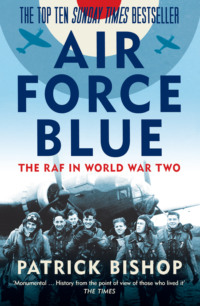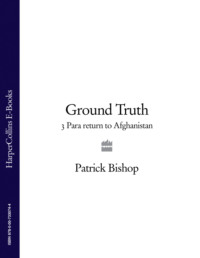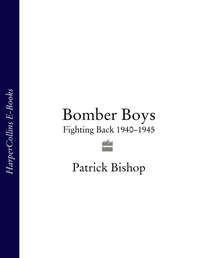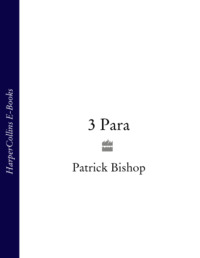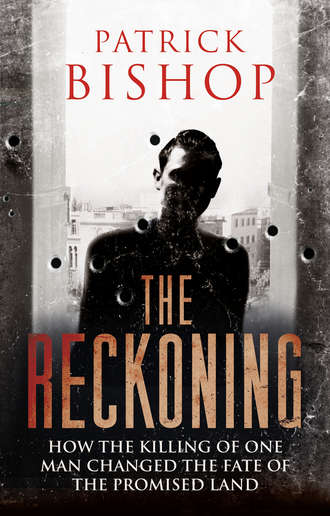
Полная версия
The Reckoning: How the Killing of One Man Changed the Fate of the Promised Land
The bombs on the train at Haifa in April 1938 appeared to be part of the campaign. But instead of murdering Arabs, they had killed Wally Medler and Michael Ward. Until now, Geoffrey Morton’s police activities had mainly involved dealings with Arabs. The incident had brought him into painful contact with what was the emerging, and would eventually be the dominant, threat to law and order in Palestine – the activities of dissident Jews. According to Morton the Irgun issued leaflets admitting their responsibility for the bombs ‘but stating that [they] had been intending to kill Arabs and not British police’. He was ‘not able to derive any consolation from this explanation’.25
In his autobiography which appeared in 1957, and in another unpublished account of his police career in Palestine written just before he died, Morton gave great emphasis to the incident. As well as losing his friend he had gained an enemy, a figure who would come to dominate his life. Preoccupied with the Arab uprising, Morton knew little about the Irgun, which anyway had only a small presence in Haifa. He now ‘took the opportunity to find out all I could’ about them.26 In the process he ‘heard for the first time of the man’ who was reputed to be the brains behind the killings. ‘His name,’ he revealed with a flourish, ‘was Abraham Stern.’*
In the later memoir, completed in 1993, three years before his death, he gave a slightly expanded but no less dramatic version. ‘Intelligence sources reported that one Abraham Stern, who was known to be their ballistics expert, was responsible for devising and setting this booby trap,’ he wrote. ‘It was a name I had not heard before. I was to remember it.’27
This account varies in some minor details from the earlier one. The main assertion, though, is the same: Avraham Stern was the man behind the bomb that killed Wally Medler and Michael Ward. The detail that the bombs were aimed at Arabs rather than policemen would soon be overlooked as, within eighteen months, the Irgun widened the scope of their operations and British officers came under attack.
Morton was right to blame the Irgun for the bombing. But was it true that Avraham Stern was behind it? There is no surviving official documentation on the killings of Medler and Ward. Much of the Mandate’s paperwork was destroyed or scattered in the process of departure.
The most complete record of activities of the Palestine Police CID – the department that dealt with the Jewish underground – was collected by the Haganah, who had many members and sympathizers among the government’s Jewish employees. It is made up of documents secretly copied under the noses of the Mandate’s rulers and papers captured after the British left and is now housed in a library in Tel Aviv. The boxes contain no material about the Haifa bombings. When, later, Avraham Stern’s name does begin to appear in intelligence reports, there is no mention of his being suspected as the brains behind this operation.
That does not, of course, mean that British intelligence officers did not believe Stern was the culprit. If they did, they were wrong. It was true that Stern knew something about ballistics. Together with David Raziel, he had produced a 240-page small-arms manual entitled The Gun.28 He had no known expertise in explosives, however. There was a bigger problem, though, in linking him to the killing of Wally Medler. Avraham Stern was not in Palestine when the bombs went off.
* Modern-day Chişinău, the capital of Moldova.
* British officials tended to refer to him as Abraham rather than Avraham Stern.
THREE
‘Let Fists Be Flung Like Stone’
On 8 April 1938, Avraham Stern wrote from Warsaw to his wife Roni in Tel Aviv. ‘My heart aches that I misled you and didn’t return when I said I would … but I am dealing with important matters and I must finish them. I get the feeling that for us, this trip is the most important one of all.’1
Stern had left Palestine for Poland at the end of January. The visit would turn out to be another protracted absence of the sort that was placing a strain on his marriage but the excuse was genuine; the mission was indeed important. He was acting as an envoy for the Irgun, liaising with high-level Polish officials who seemed willing to cooperate with one of the Revisionists’ boldest and most visionary schemes. There were three million Jews in Poland and the government was keen to reduce the numbers. When the Irgun proposed a plan to encourage Jews to emigrate to Palestine they had responded positively. They had gone even further and appeared willing to allow military training for young Jewish Poles and to facilitate the export of weapons to the Irgun’s armouries in Palestine. Stern was effectively the Irgun ambassador in Poland and deeply involved in all aspects of the transaction. It seems unlikely that he would divert from these duties to organize an anti-Arab outrage at 1500 miles remove, even if it had been logistically possible.
Stern was a very busy man. He was also a dutiful son and during his trips to Poland made time to visit his parents in Suwalki, 150 miles north-east of Warsaw near the border with Lithuania. It was there that he had been born on 23 December 1907, three and a half months after Geoffrey Morton arrived in the world. More than a century later, Suwalki has not changed all that much. The long main street is lined with pastel-painted, stucco-fronted public buildings, shops and dwellings − the sort of thing you can see anywhere in the thousand-mile swathe of territory between the Baltic and the Balkans.
There is nothing to indicate that Suwalki once had a thriving Jewish community − that the large yellow-washed apartment block on the high street housed the old Jewish hospital or a smaller, more elegant structure next to the town hall used to be a Jewish high school.2 Stern’s home is marked, however. Set into the wall of a building just off the main street is a tablet of liver-coloured marble. The faded lettering on it records that this was the birthplace of ‘Abraham Stern – Yair’, the ‘poet and linguist’ who was ‘killed in action in Tel Aviv’. The town council was persuaded to put it there some thirty years ago by Stern’s younger brother, David, in return for him renouncing any claim to the house.3
The building is now a bank. In 1907 it was a bourgeois villa, the residence of Mordechai Stern, a dentist, and his wife Hadassah-Leah, known as Liza, a midwife in the Jewish hospital. Its windows look out onto the town hall and a large park. There in the summer you could take coffee, eat an ice cream, read a Warsaw newspaper, while bees buzzed over the flowerbeds and a cooling breeze stirred the leaves on the trees. ‘Oh, the park!’ remembered Leslie Sherer, a contemporary of Stern’s. ‘An oasis of fresh air and tranquillity. To sit down on a bench and close your eyes and listen to the “klop, klop” of horses’ hooves on the stone pavement.’4
The calm classicism of the architecture gives an impression of solidity and order. But in early twentieth-century Suwalki the fields began just on the other side of the elegant portes-cochères and beyond them lay the thick forests and vast lakes of one of the wildest stretches of north-eastern Europe.
The town’s position was unfortunate. The area was an endlessly contested borderland and had at various times been part of Polish, Russian and Prussian territory. When Avraham was born it lay within the Russian empire and had done so since 1815. It was a military post and tsarist troops were garrisoned in the gaunt brick-built barracks on the outskirts. Jews began arriving in the town in the early nineteenth century and before long, according to the historian of the Jewish community Shmuel Abramsky, ‘constituted the vital pulse of the region’s economic life’.5
Their energy and confidence was reflected in a crop of new buildings. In 1821 the first synagogue was built. Soon there were Jewish schools for boys and girls and Bible study centres. The elderly were looked after in the old folks’ home. The sick were treated in the Jewish hospital on the city’s main thoroughfare and the dead buried in a large cemetery on the edge of town, near the Czarna Hańcza river.
There was little friction between Jew and Gentile, though neither community mixed outside of business. ‘It can be said [wrote Shmuel Abramsky] that relations between Jews and Christians were generally tolerable from the founding of [Suwalki] until World War 1. There was no continuous tradition of fanatic anti-semitism. In fact there were no conflicts of interests between Jews and non-Jews.’
Zionism had taken root early in Suwalki. In 1881 a prominent local businessman and Talmudic scholar, Eliezer Mordechai Altschuler, set up the first Zionist foundation, Yissud Hama’ala, to raise funds for a colony in the Promised Land. The following year he set off on an exploratory mission. He left behind a land of woods and water on which the industrial age was rapidly encroaching and landed in a parched, backward world, sunk in medieval squalor. The collision with reality failed to a dent Altschuler’s enthusiasm – one of the essentials of Zionist belief was a contempt for mere facts. He wrote home that, on the journey from the coast to Jerusalem, ‘I descended from my wagon many times and fell to the ground and embraced it, and kissed the stones with burning lips.’6 Eventually, a colony was established and Suwalki was linked to the Promised Land.
It was in this society, invigorated by prosperity and the stimulus of new ideas, that Avraham Stern passed his early childhood. His father Mordechai’s days were spent in his surgery on the ground floor. Liza went to and from the hospital a few blocks away, where she oversaw the births of most of the city’s Jewish babies. According to her grandson Yair Stern, she ‘was the powerful force in the family’.7 Avraham was known as ‘Mema’, a nickname he used in letters to those closest to him for the rest of his life. In 1910 a brother, David, was born. Their upbringing seems to have been a stable and contented one and David’s daughter, Amira, remembered her father talking fondly of the early days in Suwalki.8
In August 1914 came the first tremors of the earthquake that would destroy old Europe. By the following June, Suwalki was in German hands. When the Germans arrived, Mordechai was in the East Prussian capital, Königsberg, either receiving medical treatment or seeking supplies for his practice according to different accounts. He returned home to an empty house. Liza had fled with Avraham and David across the Lithuanian border to her father’s home in Vilkomir. Mordechai was arrested and sent to a detention camp.
The flight brought to an end the longest period of stability that Stern would ever know. For the next six years he was a refugee, reliant on the charity of a succession of relations or, after his mother decided to return to Suwalki, more or less having to fend for himself. He spent some of his exile with an uncle in Petrograd, which was still in a state of revolutionary ferment. Twelve-year-old Avraham worked for the local student cooperative in return for food. He made extra money selling cigarettes. He enrolled at a school and learned to play the piano. He also joined the Pioneers, the Communist Party’s version of the Boy Scouts.
He lived beyond the control of adults, hanging out with young revolutionaries and visiting the Mariinsky and Alexandrinsky theatres. When his parents wrote demanding his return, he played for time, asking to be allowed to finish the school year. In the summer of 1921 he could stall no longer and made his own way home. Without money or documents he was reduced to hopping freight trains, and arrived in Poland illegally, smuggled over the border in a sack on the back of a farmer.
He was barely out of childhood yet he had already had great adventures and witnessed historic events. At first family life was strange and restricting. Father, mother and son found it difficult to reconnect. According to Stern’s biographer, Ada Amichal-Yevin, Mordechai Stern was a distant figure who sat alone reading and ‘never … found a path to the heart of Avraham’.9 Avraham Stern’s son, Yair, formed the impression from conversations with Liza that he was ‘not a father who [cared] a lot about his children’.10 Liza, too, seems to have been too preoccupied with work and a busy social life to engage very closely with her son.
Avraham went to the Jewish Gymnasium on Kościuszko Street just down the road from his home. He had to learn Polish anew, but he had a gift for languages and was soon impressing his classmates with his eloquence. ‘He had his own way of building sentences,’ one of them remembered. ‘He had a captivating way of speaking.’
Avraham Stern stood out from the start. He was a show-off with a compulsion to perform. He organized amateur theatricals and took the best parts. In 1925 he played the title role in his own production of King Lear. He thrilled the Gentile girls at the Polish high school with a poetry reading, and managed to conduct a protracted flirtation with three of them, wooing them with examples of his own poetry. He preferred the company of girls to playing football or swimming in the Czarna Hańcza river with his schoolmates. He seems to have set out to be special. According to his biographer, ‘although he did not behave towards his friends arrogantly, they felt a distance – a certain secret and unexplained space between him and them’. This was seen in the way he dressed – sharply, as observed by the beady-eyed headmistress of the Polish girls’ school who noted disapprovingly the ring that flashed on the young Jew’s finger as he read verses to her impressionable Christian charges. It also showed in the way he froze out anyone who displeased him, behaving as if they did not exist.
In one respect, though, Stern conformed with his contemporaries. Suwalki was a Zionist town. The chaos that rocked the borderlands after the war had deepened the belief that this was no place for Jews. At home and at school the message was repeated. Mordechai and Liza were fervent Zionists. The Gymnasium’s principal, Binyamin Efron, made sure his pupils were indoctrinated in the new faith. The regular curriculum was supplemented by ten hours of Jewish subjects – history, literature, the study of Hebrew and the Bible. Zionists were aspiring, at one level, to be normal – but in a Jewish way. In the land of Israel they would be farmers and sportsmen and soldiers. Contemporary Jewish military heroes were in short supply. Jewish boys had to reach far into the past for role models.
They called their football team after the Maccabees, the rebel army that drove out Hellenized usurpers and restored the Jewish state of Judaea, 160 years before the birth of Christ. If young Avraham Stern did not play football, he felt the excitement in the air and wanted to share in it. When the Zionist Boy Scout movement, the Hashomer Hatzair (‘The Youth Guard’), opened a branch in Suwalki, he became its first leader.
In 1925 the government subsidy to the school was cut and it was forced to close. Most of Avraham’s classmates made arrangements to continue their education elsewhere in Poland. Even before the announcement of the closure, the Sterns had been considering sending their son to Jerusalem to finish his studies. A Zionist charity supplied a grant which helped towards the costs. At the age of eighteen, Avraham Stern had already experienced enough dramas to last a lifetime. In December 1925, he left Suwalki with his friend Pinhas Robinson to embark on a new adventure.
The pair landed in Haifa on New Year’s Day 1926. Stern had no doubt he had made the right decision. In March he wrote to Meir Kleif, a friend in Suwalki: ‘I arrive full of hopes and reverentially touched this land … upon which I intend to build a new life full of song, sun and joy … I was like an innocent foolish and happy child as I ate and drank from what is ours, when I walked on our land and under our sun … the land was so pretty that my soul filled with hope and faith in a better future.’11
The boys went to Jerusalem where they enrolled at the Hebrew Gymnasium in the Bukharan quarter, a lively area of the new town growing up outside the Old City walls. Many of the pupils had been born in Palestine and raised in a culture of boisterous informality. Avraham, with his good manners and correct clothes, brought a whiff of the old world to the classroom. He seems to have enjoyed the distinction, teaching the other pupils ballroom dancing and sentimental Polish songs.
The dandyish pleasure in his appearance, the light-hearted love of theatricals and music were a genuine and enduring side of Avraham Stern’s nature. But they combined with a sense of destiny and a conviction that a violent struggle was looming that would settle the fate of the Jews. Both aspects of his character were displayed at one of the school’s end of term entertainments. He was chosen to recite a poem, and he selected ‘In the City of Slaughter’ by Hayim Nahman Bialik, a Ukrainian Jew, which described in harrowing detail the 1903 Kishinev pogrom that had radicalized Jabotinsky and transformed the outlook of many Jews.
The poem’s anger is aimed not just at the perpetrators but at the men of the Kishinev ghetto and their passive acceptance of their fate. These ‘sons of Maccabees’ had looked on from their hiding places where ‘Crushed in their shame they saw it all/They did not stir nor move/They did not pluck their eyes out/They beat not their brains against the wall’. The poem is a lament but also a call to arms. The dead of Kishinev must be avenged and the shame of those who cowered must be wiped away. Henceforth, says Bialik, ‘Let fists be flung like stone!/Against the heavens and the heavenly throne!’12
In October 1927 Stern gained a place to study Hebrew literature and classics at the Hebrew University. Among his year’s intake was a slim, open-faced seventeen-year-old with chestnut hair and bright brown eyes. Roni Burstein was the daughter of once wealthy but now impoverished émigrés from the Ukraine. Stern was captivated and was soon chatting her up. According to his son, Yair, ‘he approached her and started to talk to her and at the beginning she thought he was a Sephardi Jew because his face was dark … but then when he found out she was of Russian origin he started to speak Russian to her and quote Russian poets. She nearly fell down.’ He ‘started courting her and a big love story began’.13
The prevailing political atmosphere on Mount Scopus, among faculty and students alike, was liberal and leftist. The adolescent attraction Stern had felt in his Petrograd days for revolutionary communism was long forgotten. His main interests were artistic and he had yet to develop a coherent political outlook.
That changed with the riots of August 1929. Any complacency that might have remained among the Yishuv about the scale and dangers of the task they had set themselves was swept away by the massacres. In Hebron, where a small community of Jews had lived in peace with their neighbours for centuries, Arab mobs killed, maimed and raped, leaving at least sixty-five dead.
These events had the same effect on the Jews of Palestine as the Kishinev pogrom had on the Jews of Central Europe.
The events of August sent convulsions through the Yishuv. They revealed an alarming truth: the Haganah – the Defence – had failed in its prime task. It had lacked the organization or the means to shield the Jews from what was clearly going to be a continuing threat. Its leaders now set about training recruits and acquiring arms, unhindered by the British who, in light of their own failure to protect their charges, had conceded the notion that, in certain circumstances, the Jews had the right to defend themselves.
Stern was among the new recruits. The Haganah sent him first to a guard post in Jerusalem, then to a village in southern Galilee. By now the trouble was over and there were no weapons available even if violence were to flare up again. On guard duty, Stern passed the hours of darkness staring out into a night scented by the cooling earth, his head filled with melancholy thoughts. He felt, he wrote later, ‘alone and abandoned … so distant, a stranger … everyone is far from me. Only death is near; only he has not forgotten me.’14
After a month in the countryside he returned to Jerusalem. By then, Roni had left for a study course in Vienna and for the next year Avraham would have to rely on the power of his words, poured out in hundreds of letters, to keep the romance going. In October he went to visit his aunt in Alexandria on the train that clacked along the coast, stopping every few miles at Jewish settlements. He described the journey in a letter to Roni’s mother. The colonies were surrounded by orchards and plantations, making a ‘sea of green’ that ‘filled his soul with joy and happiness’, he enthused. But, simultaneously, the bucolic sight, glowing with vitality, aroused thoughts of death: ‘I thought how happily I would give my life so that all of Palestine could bloom like these orchards … we love Eretz Yisrael more than our lives … we are ready to give ourselves and our lives to her.’15
At this stage his attachment to Zionism was still romantic rather than practical. In a short time his outlook would change and be replaced by a determination to make his poetic vision of ‘Eretz Yisrael’ − the ‘Land of Israel’ in something like its biblical dimensions − a reality. Career and security, even his love for Roni, would take second place to his pursuit of this end, no matter how distant it might seem. As he wrote to his younger brother David in Suwalki in November 1930, ‘reality is not what it is and appears to be, but what force of will and longing for a goal may make it’.16 This belief in the supremacy of willpower carried him through the rest of his life, colouring almost all his actions, a system of belief that simultaneously made compromise impossible yet opened the way to courses of action that seemed to contradict the spirit of the dream.
Despite the shock of August 1929, the Haganah remained a defensive organization and firmly under the control of the left-leaning Zionist establishment. Stern’s political opinions were hazy and coloured by his poetic imagination rather than hard fact. Events were shaped not by economics and social factors but by heroes and great sacrificial deeds. Among his inspirations were Jewish warriors of antiquity such as Simon bar Kokhba, who rose up against the Romans, and Elazar ben Yair, who in AD 73 or 74 led the Jews of Masada who chose to kill each other rather than surrender to Caesar’s forces. But they also included modern nationalist figureheads such as Giuseppe Garibaldi who, with a thousand dedicated men, had created modern Italy, and Jozef Pilsudski who in 1918 founded a new independent Poland after 123 years of foreign domination. Stern admired men of destiny, almost regardless of ideology. He could find positive attributes even in Mussolini, Stalin and Franco. In time he would come to believe he was a man of destiny himself.
These were men who did not shrink from violence and Stern’s poetry reveals a fascination with bloodshed and death. He might seem a dandy aesthete, but his imagination was filled with visions of sacrificial violence: ‘As my father carried a prayer shawl to Sabbath synagogue, I carry sacred pistols,’ he wrote in a 1929 poem.17
Stern’s attitudes led him naturally towards the Revisionist movement. Its image was self-consciously heroic. It rejected the gradual, democratic approach of Weizmann and Ben-Gurion, which relied on Britain to realize the Zionists’ dreams. If Jews wanted a state, the Revisionist message ran, they would have to take it for themselves. It appeared to have a strong leader in Ze’ev Jabotinsky, whose impatience and disregard for obstacles put him in almost permanent conflict with the Zionist establishment.
But Stern was above all an individualist. The discipline and structures of a political organization made him uneasy and he had an aversion to accepting orders. When, in 1931, radical elements inside the Haganah – most of them Revisionists – broke away to form what would become the Irgun Zvai Leumi (IZL), Stern did not rush to join them.
He was eventually recruited by David Raziel, a fellow student at the Hebrew University. Two years younger than Stern, Raziel was reserved and taciturn. He was committed to action and contemptuous of restraints. At the same time he had a firm grasp of practicalities and did not share the quasi-mystical enthusiasms of his friend.




